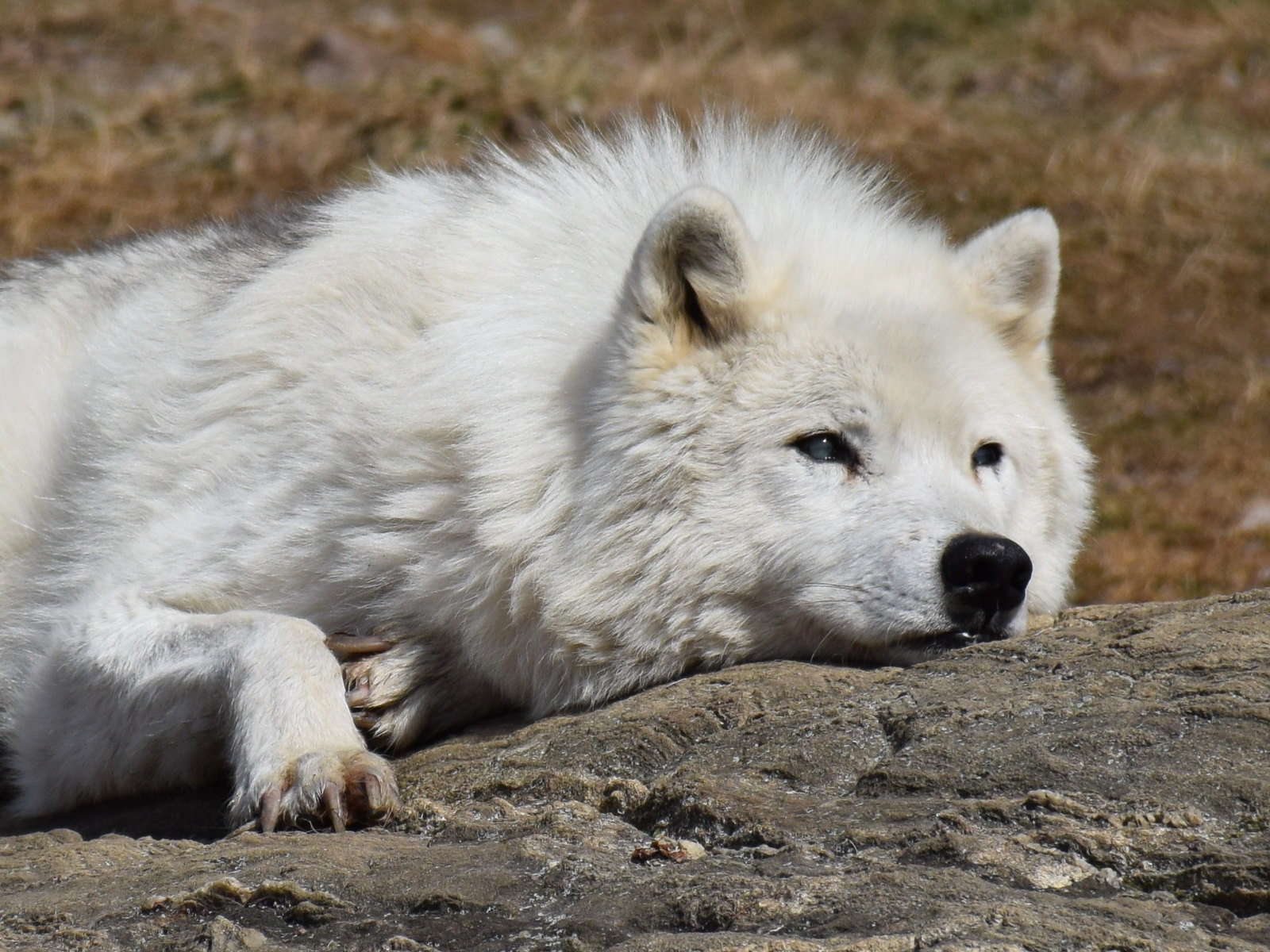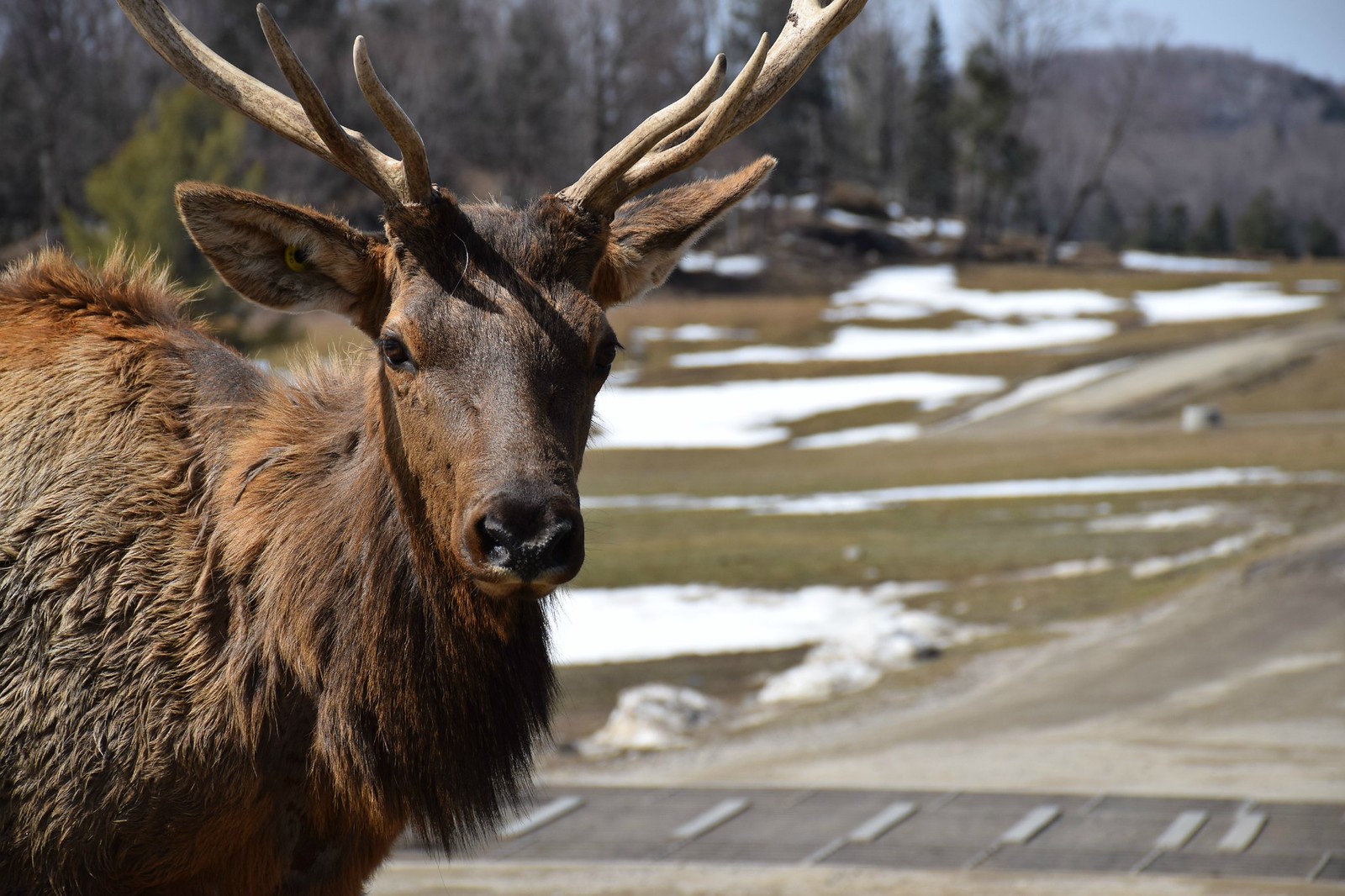
Amazing Wildlife Watching on a Canadian Safari
Chances are when you think of a safari, seeing the big 5 in Africa is what comes to mind. Seeing a big moose in Canada may not have been on your radar. But, if you like wildlife watching, Canada is a hot ticket.
While there are excellent places in the wild to look for animals, you can see many of Canada’s native species at Parc Omega. It’s a drive-through safari park located in Montebello, Quebec, about a 1-hour drive from Ottawa, or 1.5 hours from Montreal.
Essentially, it’s like a big zoo, but one where wild animals roam free in natural habitats within the 2200 acre park.
Despite the large size of the park, there are always amazing wildlife watching opportunities along the 15-kilometre car path, like the arctic wolf or an elk that came by for his closeup.


Many of the animals in the deer family shed their antlers in the late fall to conserve energy for the winter, and then grow new ones in the spring. Their antlers have a soft, furry covering, called ‘velvet’, which you can see here. The velvet usually gets worn off by the fall.
While posing for his closeup, this guy left a trail of slobber down the side of my car, also known as the Canadian car wash. It’s part of the park experience.

Halt, who goes there? This elk held my car hostage for a few minutes. The elk is the second largest of the deer family, and most of the time, hangs out in single sex herds. As you can see, the male elk has a short dark mane. During the fall mating season, the males can get quite aggressive and dangerous. This fellow was just looking for a snack.

This elegant creature is the fallow deer, imported to Canada from Mediterranean areas in Europe. They are distinguished by the Bambi-like spots on their rump.
Spring time in the Park

If you visit the Park in the spring time, there’s a good chance you might see some new arrivals like these baby boars. Who knew that wild piglets have stripes like watermelons?
The Woolly Mammoths

Okay, so the woolly mammoths became extinct some time ago, but the musk ox is a survivor of the Ice Age. They live in the Arctic, and their thick, woolly fur is said to be eight times warmer than a sheep’s coat.
Bison are also members of the ox family. Something of a Canadian icon, they were on the brink of extinction in the late 1800s with the conquest of the West and the railway construction. Today, there are up to 300, 000 bison living in zoos, wildlife parks, and reserves in North America.

Walking Trails
The Park also features a number of walking trails, including one that goes around a lake, and a 300-metre boardwalk for watching the black bears and the timber wolves.
The timber wolf, also known as the gray wolf, lives in northern Canada in hierarchical packs. This was clearly on display when I visited. I watched the top dog chase down a pack member who had clearly given offense in some way. Then he led the pack in a little dance and a good old fashioned howl.

I thought this bear cub looked like he had been caught with his paw in the honey jar. In fact, like Winnie the Pooh, bears do love honey, although they will eat the whole hive, including the bees.
The walking trails in Parc Omega are, of course, in areas safely fenced off from most of the animals in the park. Then again, you never know who might be watching you!

For info on fantastic places to visit near Parc Omega, see:
A Holiday Spa Break in the World’s Largest Log Cabin
A Fairy Tale Fall Getaway: Hotel Quintessence in Quebec, Canada
Things to do in Mont Tremblant, Canada When it’s Not Ski Season





Wow such stunning pictures, it must have been incredible to get close enough for these shots
Thanks Sarah. It really is a fantastic experience at the Park.